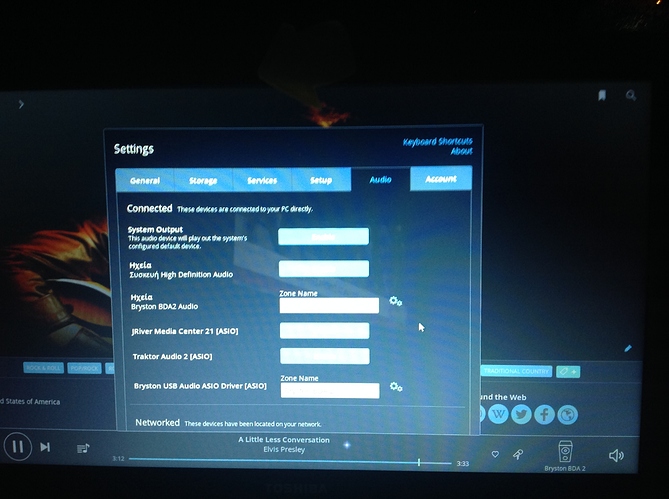Hi dimitris
They should both be bitperfect.
Why not try both and find out, which one you like more/better?
It’s just a few klicks to compare 
Please let us know, which one you prefer…
I think they are the same to tell you the truth,but I was wondering what Roon recommends better.
See what Brian has said about this before.
Most audiophiles seem to prefer Asio and it was added by Roon soon after launch due to the popular demand.
It depends on the DAC, what sounds better.
From what I read, I should prefer ASIO, but my ears prefer WASAPI, that is with my DAC, in my system.
You should find out what you like better.
In my case, ASIO sounds flat and boring, compared to WASAPI. It’s a small difference, but it’s noticable. Last time I thought It didn’t sound as good as usual, then I went into the settings and found out that it was on ASIO.
With your DAC it can be the other way round, you have to trust your ears and find out.
I suspect so and it likely also depends on the quality of the Asio driver provided by the DAC manufacturer.
Both are bit-perfect.
ASIO vs WASAPI (WDM) is a question with no general answer. Often it makes no difference at all. Sometimes one does better than the other, usually because the driver author did a better job on that one.
The link @philr posted was good. I also wrote about this recently here…copy-pasted and cleaed up:
I think Microsoft did a good job with WASAPI and that alternative driver stacks like ASIO are for the most part an unnecessary evil in 2015.
There are some wrinkles, however…
-
Native DSD–when a DAC supports it, ASIO drivers can enable direct transmission of DSD data without encapsulation. Both options are bit-perfect, but some people swear that “Native” transmission sounds better.
-
Some USB interfaces expose a non-bit-perfect volume control via their WDM drivers. You can tell you have one of these if DSD sounds like a hiss at <100% volume. If you have one of these, disable Roon’s volume control (which is just tweaking the WDM volume controls under the hood). ASIO avoids this problem by having no support for volume control at all…so if you use ASIO you lose the ability to control volume within Roon and must use the controls on your dac/amp.
-
Some manufacturers do a better job on one driver or the other. Sometimes the drivers talk to the card very differently and can expose different hardware behavior. Fragmentation is sloppy.
-
Manufacturers are chronically terrible at exposing accurate descriptive strings for their devices, and often make weirdly inconsistent choices between their ASIO and WDM drivers, and this can make the settings/configuration experience more confusing than it needs to be.
-
ASIO is an option to try to solve a problem with a bad WDM driver, but I always start with the non-ASIO option first.
